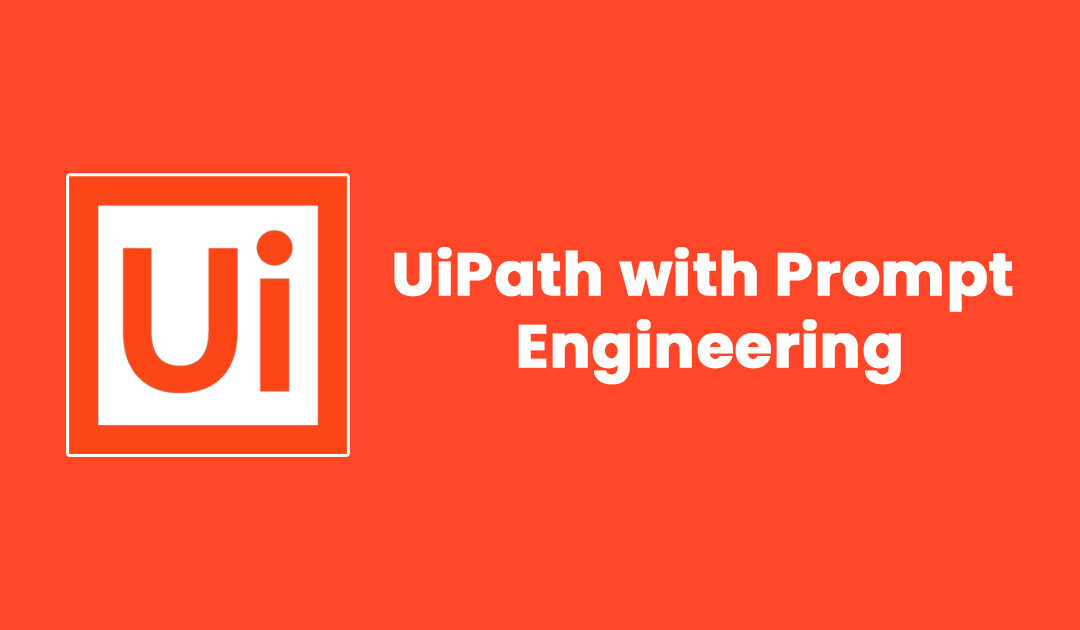UiPath, known for its strong capabilities in Robotic Process Automation (RPA), is increasingly integrating AI and Machine Learning into its platform. As AI-driven tools, particularly large language models like GPT, gain prominence in automation workflows, prompt engineering plays an important role in how UiPath leverages these AI models.
Here’s how UiPath is working with prompt engineering:
1. AI Integration in Automation Workflows
- UiPath has integrated natural language processing (NLP) and AI capabilities into its platform through UiPath AI Center and AI Fabric. This allows users to deploy and manage machine learning models, including language models, within RPA processes.
- Prompt engineering becomes essential in scenarios where AI models interact with unstructured data, such as emails, documents, or customer inquiries. By crafting the right prompts, the AI component of the automation can better understand, summarize, or extract information from text.
2. Generative AI in Document Understanding
- UiPath’s Document Understanding framework often uses machine learning models to process and extract key data from documents. AI-driven language models can assist in interpreting more complex or ambiguous documents.
- In this context, prompt engineering can guide the AI model to perform specific tasks like summarizing large blocks of text, extracting key information (e.g., invoice amounts, dates), or even classifying document types. By refining prompts, UiPath can enhance the accuracy of information extracted.
3. Natural Language Processing (NLP) and Chatbots
- UiPath Chatbots and UiPath Apps enable businesses to create conversational interfaces. With the rise of AI-powered chatbots, prompt engineering is crucial for ensuring that these bots provide useful, contextually relevant, and accurate responses to user queries.
- When integrating language models into chatbots, prompt engineering helps in designing clear and concise conversational prompts. This ensures that the AI understands the user’s intent and provides appropriate responses, improving the overall user experience.
4. Automation with Generative AI for Task Automation
- UiPath has explored generative AI to help in content generation, such as writing emails, summarizing reports, or creating draft responses based on user input.
- Here, prompt engineering is vital to instruct the AI on what kind of content to generate. For instance, prompts can specify tone, format, length, or details to ensure the generated content fits the business needs and task requirements.
5. Prompt Engineering for Intelligent Data Extraction
- In complex workflows where data extraction from unstructured sources (like PDFs, emails, web pages) is required, UiPath is leveraging AI models to interpret and organize this data.
- Prompt engineering helps define how the AI should extract data (e.g., “extract all the billing details from this invoice”) and in what format the data should be presented (e.g., “organize the extracted information in a table format”). This ensures the data extracted is usable for subsequent automation tasks.
6. Enhanced Customer Experience through AI
- For businesses using UiPath to automate customer support or interaction tasks, integrating AI-driven tools helps in creating a more intelligent system for handling inquiries, feedback, or complaints.
- Prompt engineering comes into play when designing how the AI model should respond to customer queries, ensuring responses are empathetic, informative, and aligned with brand voice. This can be particularly useful for sentiment analysis or personalized responses.
7. Automation Developer Efficiency
- Prompt engineering is being used to help automation developers by generating code snippets or suggesting actions based on natural language descriptions. UiPath’s focus on low-code/no-code development interfaces could incorporate natural language commands that generate automation code, with the help of AI models that respond to prompts.
- Example: A developer might input a natural language command like “automate email invoice extraction,” and the AI-powered UiPath platform could generate the relevant automation sequence or code snippet.
8. Future Vision: Low-Code with AI and Natural Language
- UiPath is moving toward natural language-based automation, where users can create automation workflows simply by typing what they want to automate in natural language, and the platform will interpret and create the necessary automation steps.
- This is where prompt engineering is key. By refining the way natural language prompts are designed, users can better instruct UiPath’s AI models to build accurate automation workflows without deep technical knowledge of RPA.
9. Partnerships and Third-Party Integrations
- UiPath integrates with other generative AI services like OpenAI, enabling users to incorporate GPT models into their automation flows. By using prompt engineering to customize the interaction with these models, UiPath extends the flexibility of its platform, allowing for more dynamic and intelligent automations.
- Example: A user could prompt the AI within an RPA workflow to write summaries, generate meeting notes, or respond to customer inquiries dynamically, all controlled through refined prompts that guide the AI’s behavior.
Best Practices for Using Prompt Engineering with UiPath:
- Define Clear Intent: Ensure that prompts given to the AI component of UiPath automations are specific to the task (e.g., “Summarize this email in three bullet points” vs. “What does this email say?”).
- Iterate and Test: Continuously refine prompts based on the output generated by the AI to ensure the most accurate and relevant results.
- Structure Outputs: When automating content generation or data extraction, instruct the AI on how to structure the output (e.g., tables, lists, paragraphs).
- Control Model Behavior: Use constraints in prompts to control the tone, style, or scope of the generated content, which is crucial for business applications.
Conclusion:
Incorporating prompt engineering into UiPath’s AI-driven RPA platform allows for more nuanced and intelligent automation processes, particularly when handling unstructured data, customer interactions, and generative content. As UiPath continues to evolve with AI integration, prompt engineering will play an increasingly central role in helping users create powerful, efficient automations with minimal manual intervention.

